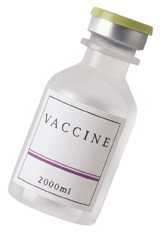Flu Protection
Posted on August 31, 2015 by bob in In Every Life
“The challenge is to receive your vaccine in time to develop immunity, yet late enough for your immunity to last through the season.”
The beginning of fall is a wonderful time of cooler temperatures and harvests, but also reminds us that it’s time for our flu vaccination. We may wonder if, when, and even what type of vaccine will be best.
The Centers for Disease Control (CDC) tracks cases of influenza (flu) weekly (http://www.cdc.gov/flu/weekly/). The number and severity of flu cases vary from year to year and by regions of the U.S., usually beginning in October, peaking between December and February, and diminishing by May or June. In the U.S., annually the seasonal flu vaccines are designed to contain types of viruses that have been tracked globally to evaluate drift of the most prevalent viruses for the next flu season.
New flu viruses continuously appear.
— Type A viral changes are usually significant and are not recognized by a person’s immune system; thus the person develops an illness.
— Type B viral changes are usually more subtle mutations. A person exposed to a virus similar to one encountered in the past through either vaccination or illness is likely to have some immunity, and therefore be less likely to develop symptoms.
This helps explain why in some years some people retain a bit of immunity to flu from prior year vaccinations or infections, yet not in other years. An individual’s age, health, and overall immune status also influence how effective a flu vaccine will be at a particular time of exposure. Immunity declines over time, and is impacted by chronic or other illnesses, and even stress.
Decline in immunity is the basis for annual vaccinations to prevent influenza illness, hospitalizations and deaths. All people can contract and suffer from flu, but early childhood, older ages, and those with chronic conditions are at especially high risk. (http://www.cdc.gov/flu/about/disease/high_risk.htm)
The Advisory Committee on Immunization Practices (ACIP) annually recommends the mix of viruses in vaccines to the CDC. For 2015-2016, the ACIP recommends vaccination for everyone 6 months or older with EITHER a nasal spray vaccine (live Attenuated IV) or injectable vaccine (IIV), depending on an individual’s age, contraindications or precautions.
Current common circulating flu viruses are similar to influenza:
— A/California (H1N1)
— A/Switzerland (H3N2)
— B/Phuket
— B/Brisbane
All of the flu vaccines available in the U. S. in 2015-2016 contain the first three types (trivalent), while some contain four  (quadrivalent), by adding the B/Brisbane type virus. Vaccines can be administered as an injection into a muscle (IM), an injection just under the skin (intradermal), by a jet injector, or as a nasal spray. Trivalent vaccines are currently administered IM or by jet injectors. Quadrivalent vaccines are currently administered by nasal spray or intradermally. The CDC will make more specific recommendations in early fall, based on the expected timing and types of viral spread. (http://www.cdc.gov/flu/about/season/upcoming.htm).
(quadrivalent), by adding the B/Brisbane type virus. Vaccines can be administered as an injection into a muscle (IM), an injection just under the skin (intradermal), by a jet injector, or as a nasal spray. Trivalent vaccines are currently administered IM or by jet injectors. Quadrivalent vaccines are currently administered by nasal spray or intradermally. The CDC will make more specific recommendations in early fall, based on the expected timing and types of viral spread. (http://www.cdc.gov/flu/about/season/upcoming.htm).
Discussion with your healthcare provider can help you determine which type of vaccination is best for you based on CDC’s recommendations, your age, and health status. At least two weeks are needed for your body to develop immunity to the viruses contained in the vaccine. The challenge is to receive your vaccine in time to develop immunity, yet late enough for your immunity to last through the season.
Flu is spread up to six feet from person to person – most likely by droplets during coughs, sneezes, or conversation – landing in a nearby person’s nose or mouth then progressing into their lungs. Droplets can also be transferred when a person touches a surface on which droplets have landed, and then touches their nose or mouth. The flu virus can be spread to others before you know you are sick because the virus may be in your body one to four days before symptoms appear, or you may not develop symptoms. The virus can be spread for seven or more days after symptoms occur.
You can help protect yourself by getting vaccinated each fall, staying away from those who are sick, avoiding crowded spaces, frequently washing hands (with soap and water or an alcohol-based rub), and avoiding touching your nose/mouth. Additionally, you can help decrease the spread of flu by staying home when you are sick, covering your cough or sneeze, and assuring surfaces you touch are cleaned and disinfected (pencils, pens, phones, light switches, dishes, glasses, etc.).
Have a safe and healthy fall!

Arlene H. Morris, EdD, RN, CNE is Professor of Nursing, Auburn Montgomery School of Nursing. Reach her at amorris@aum.edu.









